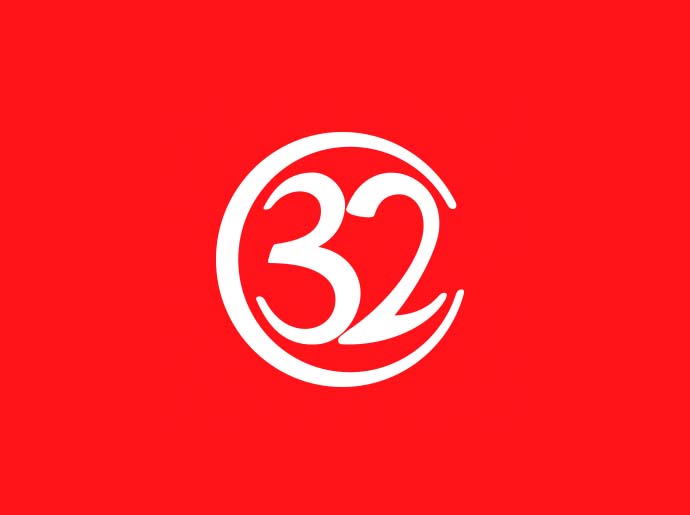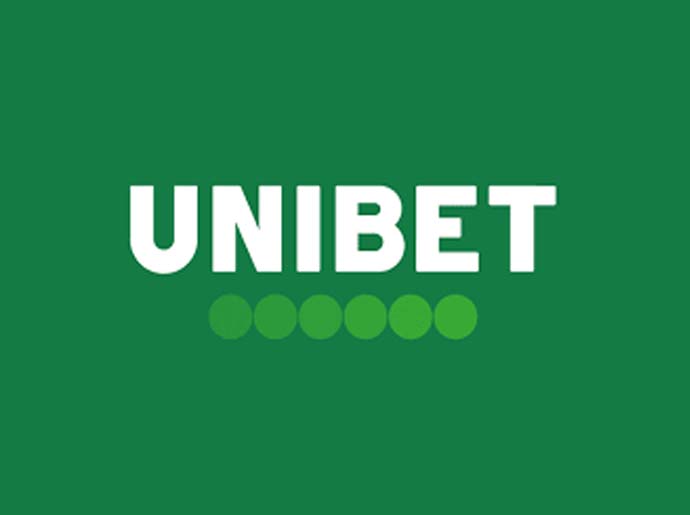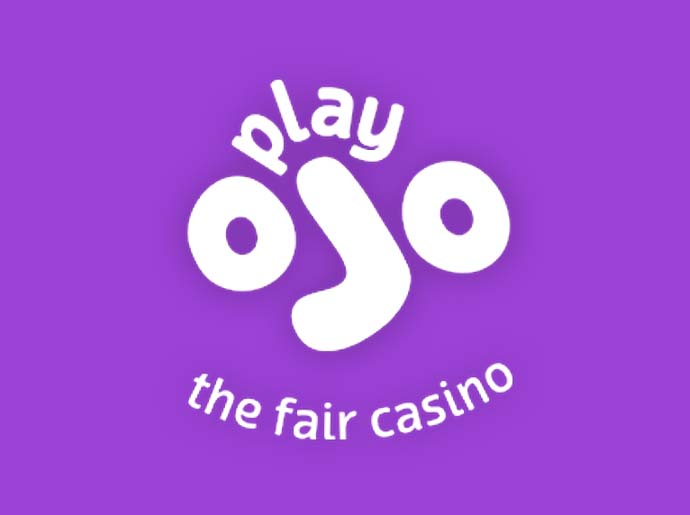Best Blackjack Casinos
Menu
Play online blackjack games at the best casinos. Above, we list our selection of the best blackjack casinos, where you can play for free and real money. As online blackjack is one of the most popular casino card games, you will find it in almost all casinos, so it’s important to choose a reliable and safe online casino.
How To Play Blackjack
This how to play blackjack guide will teach you all the basic rules required to be able to play blackjack efficiently. To start, let’s define the objective of blackjack because this is commonly misunderstood.
THE OBJECT OF BLACKJACK IS TO BEAT THE DEALER
There is a general misconception with regard to the objective of playing blackjack. Many people believe the objective is to get 21 or as close as 21 as possible. While achieving a total of 21 is desirable, it is not the ultimate goal. The ultimate goal is to beat the dealer and this can be achieved whether you have a total of 21 or not.
Remember, blackjack is a game played against the house and not other players, therefore, the sole objective is to focus on beating the dealer.
How do you Beat the Dealer?
There are 2 ways you can beat the dealer:
- By having a total larger than the dealers (making sure your hand does not exceed 21).
- When the dealer goes on to bust and your hand is 21 or below.
Blackjack Basics (Rules)
Now the objective of blackjack has been made very clear, lets go over some of the basic blackjack rules.
The Cards
Blackjack is played using standard playing cards without the jokers. There are some variants of blackjack, however most casinos use 6 decks.
The card values of blackjack are perhaps the easiest aspect of the game. As with any standard deck of cards, it contains 2, 3, 4, 5, 6, 7, 8, 9, 10, J, Q, K, A in one of four suits, spades, clubs, diamonds and hearts.
- The cards 2 – 9 have a value equal to its number
- The cards Jack, Queen and King have a value of 10
- An Ace has a value of 1 or 11 depending on which is more preferable to the player.
Blackjack Card Values
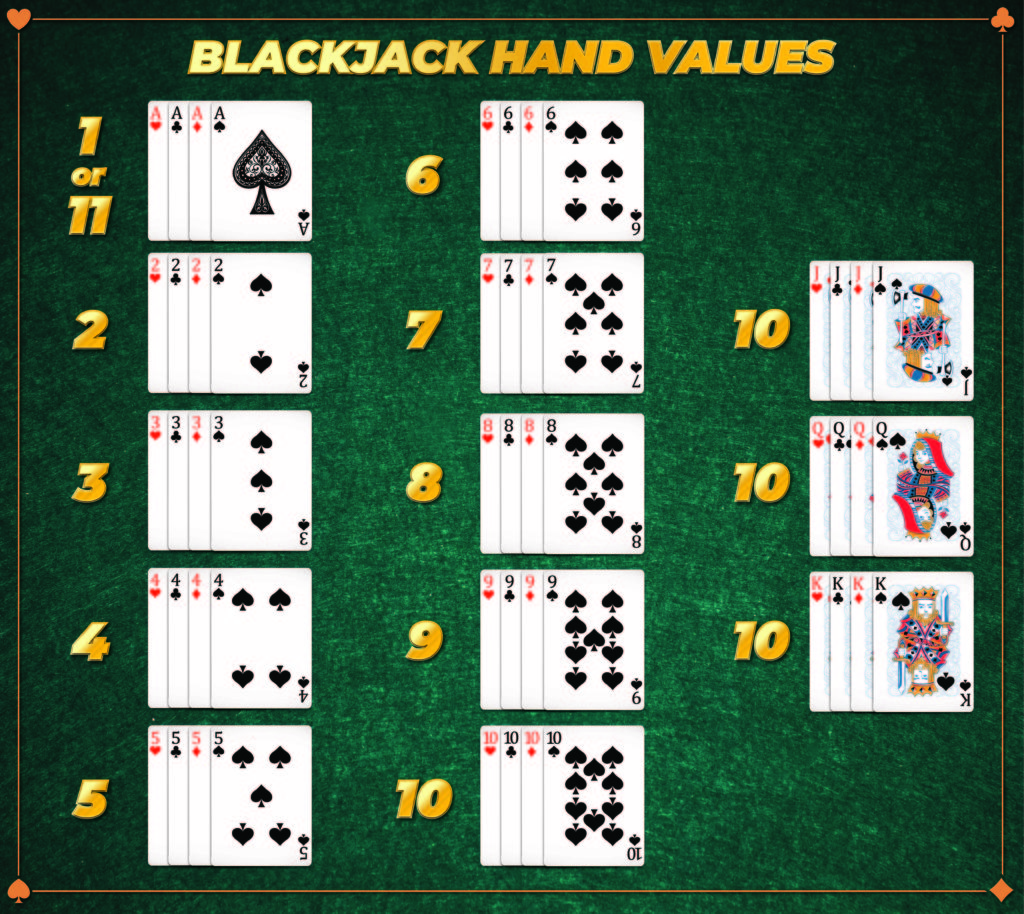
Number of Players
On a standard blackjack table, there are seven positions, therefore, from one player up to seven players can play against the dealer.
Number of Decks
Blackjack is generally played with 6 decks of cards.
Outcomes
There are three outcomes, win, lose or draw.
- As previously mentioned a player wins when their hand total is more than the dealers hand total or when the player remains in the game and the dealers total exceeds 21 (goes onto bust).
- The player loses when their hand totals less than the dealers total or when the player busts.
- A draw or “push” as it is normally called is when the player and dealer both have the same total.
Hard vs Soft Hands
The concept of a hard and soft hand is relatively simple. An ace can have a value of either 1 or 11 depending on which is more preferential. When an ace is counted as 11 this is known as a soft hand, while hands which do not contain aces or when an ace is counted as 1 are referred to as hard hands.
For Example:

A 14 comprising of an ace and a three is referred to as a soft 14 (ace counts as eleven). If another card is taken and a king is pulled this will then result in a hard 14 as the ace is now counted as a one.
Soft hands are generally very good for the player because it gives the player a free opportunty to take a card and improve their hand without the risk of busting.
Hitting
You might have heard a blackjack player in the casino utter the words ‘hit me’. This means the player wants the dealer to deal another card. A player takes another card or hits when trying to improve his hand.
A good example would be – A player has a total of 13 (5 and 8) against a dealer 9. The best play is to hit and hope to improve the hand without going over 21. The reason for this is because you have to assume the dealer has 19 (there are more 10 valued cards in the deck than any other value, so therefore, a dealer 9 and a presumed 10 valued card equals 19).
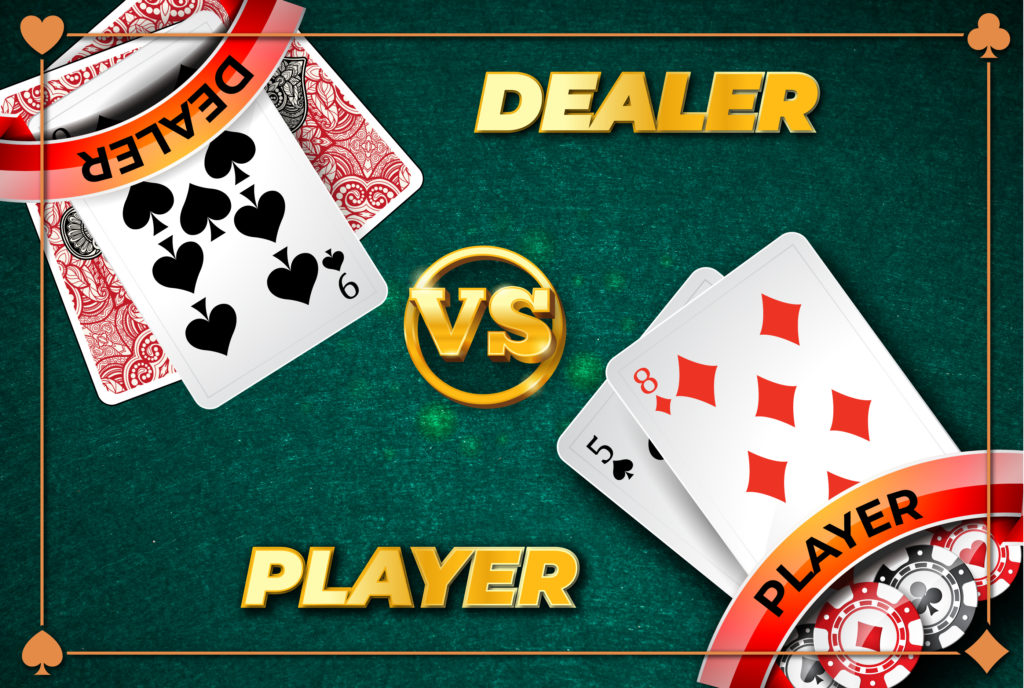
Standing
Once the player has been dealt their starting 2 cards and the dealer their 1 card, the action is then on the player. The player can opt to stand and therefore not receive any more cards.
For example – player 14 (k and 4) vs dealer 4 – The best option is for the player to stand because the dealer will have to pull at least 2 more cards and will hopefully bust. The rationale for this is because, as just mentioned, there are more high valued cards in the deck than low valued cards. If the player stands on 14 and the dealer then pulls a 10 card and a 9 card, the dealer will bust.
This also highlights the reason why its important to understand of the objective of playing blackjack. A novice player may hit on 14 against a dealer 4 because they believe they need to get a total close to 21. However, the opposite is in fact true because the dealer is more likely to bust, therfore it’s best to stand on a low total of 14.
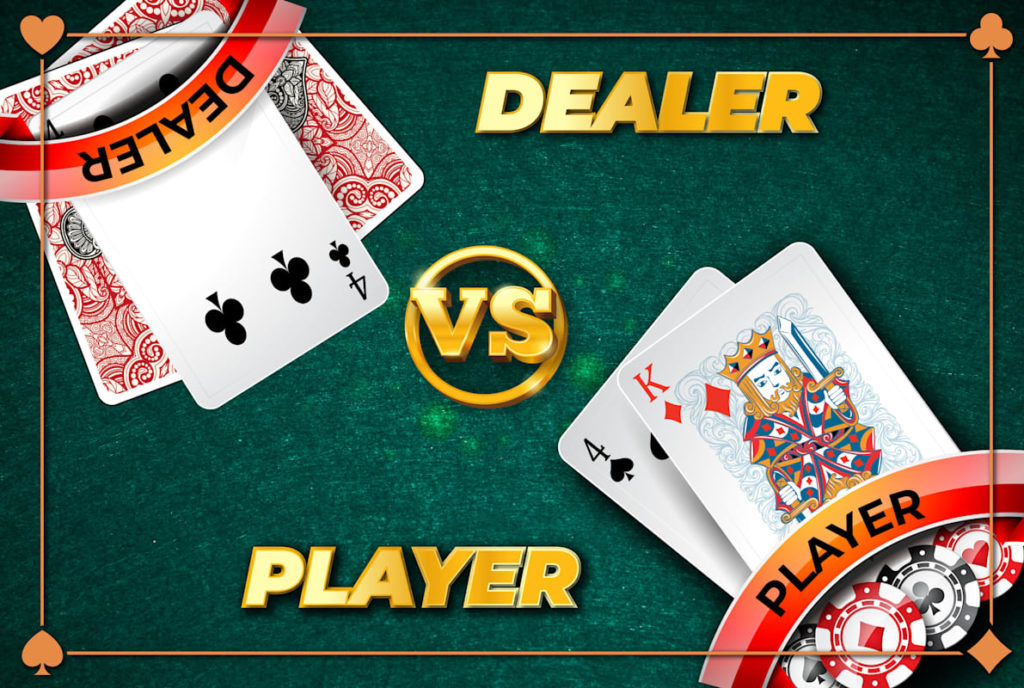
Double Down
This is the situation all blackjack players dream of because this is where the real money can be made. A player may double their initial bet after receiving their first 2 cards, however it is only advisable in certain advantageous situations. For example 11 (6 and 5) vs dealer 5. Before your cards are dealt you will need to wager how much you would like to bet. Once you place your chip/s on the table the cards will be dealt. The casino will then allow you to increase your bet by doubling its value, after which you will receive one extra card. Remember, you’ll only be dealt ONE extra card.
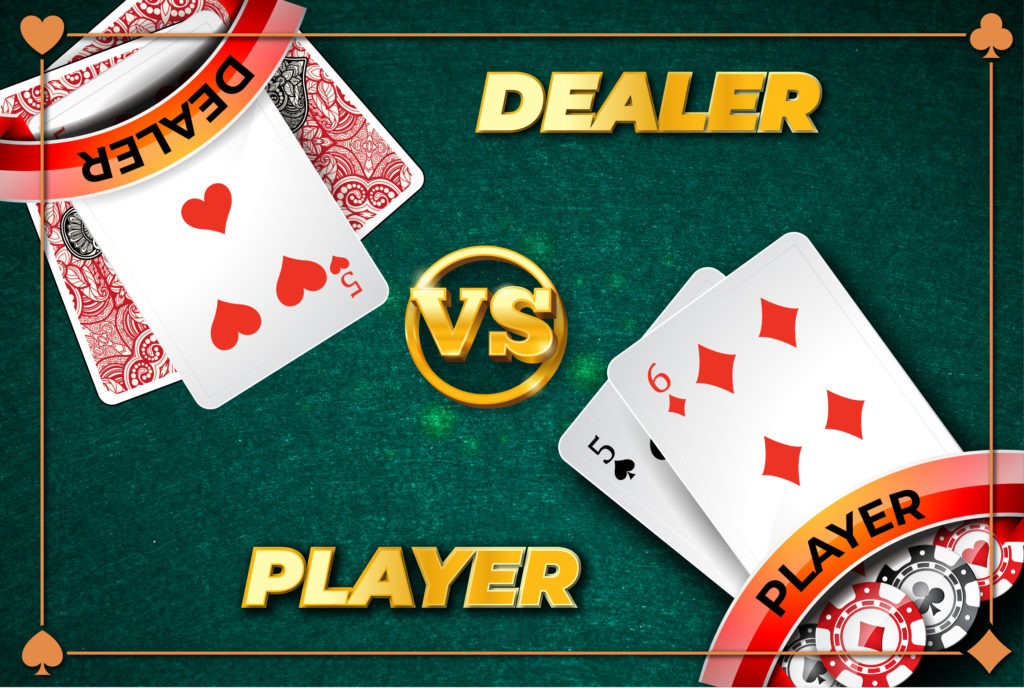
Split
Like doubling down, splitting the hand offers another opportunity for you to double your wager, however, this method is a little more complicated. If you are dealt two of the same cards, such as two 8’s, you can split them, meaning that each 8 will receive an extra card as if they were being played by different people. Each hand can receive as many cards as you like. The only time you are limited on how many cards you want is if you split two Aces. If you split Aces then each Ace may only receive one more card. The rewards on a successful split can be extraordinary. However, there is always the possibility of both hands losing. Pro Tip: NEVER SPLIT 5s

Even Money
The best feeling as a blackjack player is when you are dealt an Ace and a card with a 10 value. This hand is known as blackjack. When a player is dealt a blackjack hand, and the dealer deals himself an Ace, the dealer will ask the player if they would like even money. This means the player will accept a 1:1 payout and the round ends. Alternatively the round would have continued where the dealer would have lost and the players payout would have been 3:2 or the dealer would have scored a blackjack himself, and the round would have been null and void (a push), with the player keeping the original wager.
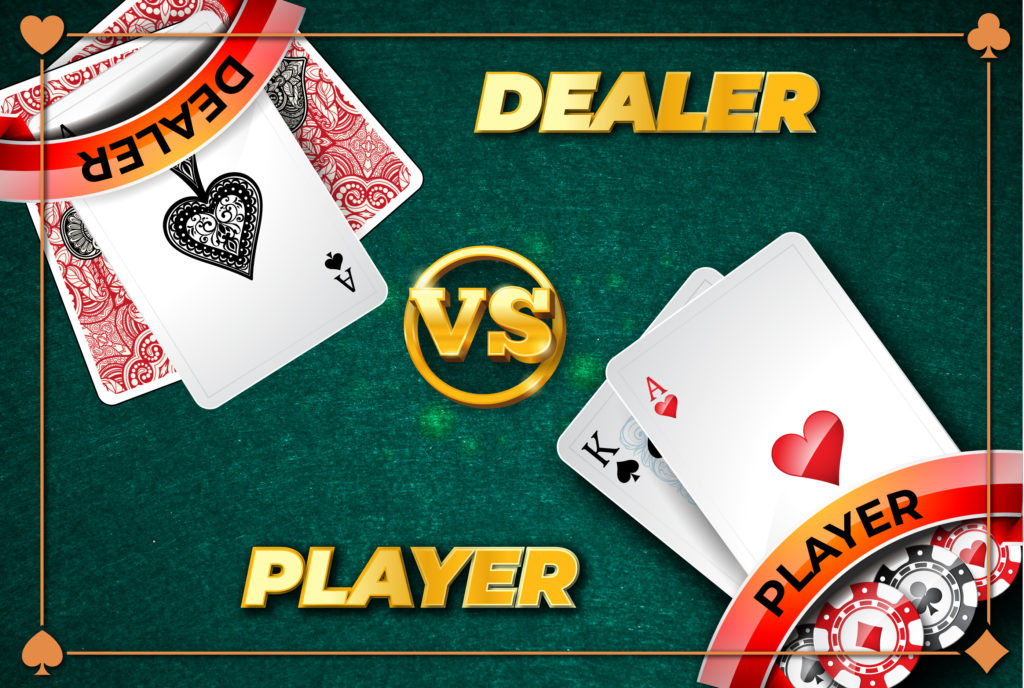
Thats the basics explained, now it’s time to take your blackjack game to the next level. Advanced plays are key to becoming successful at blackjack as they allow you to gain an upper hand in terms of knowledge and percentages.
The best way to improve your skills whether you play blackjack in a casino or blackjack online is to learn and practice basic strategy and another advanced play called card counting. Learn basic strategy first and then move onto card counting.
Both are legal to implement, however, the casino frowns upon card counting. By using this model and combining basic strategy and card counting, you can get a good indication of what cards are left in a deck and the correct play to use. It takes some practice, so don’t bust into a casino and give it a first time bash. Take some time at home to fiddle around and get it right.
Best Canada Blackjack Casinos
Blackjack Basic Strategy
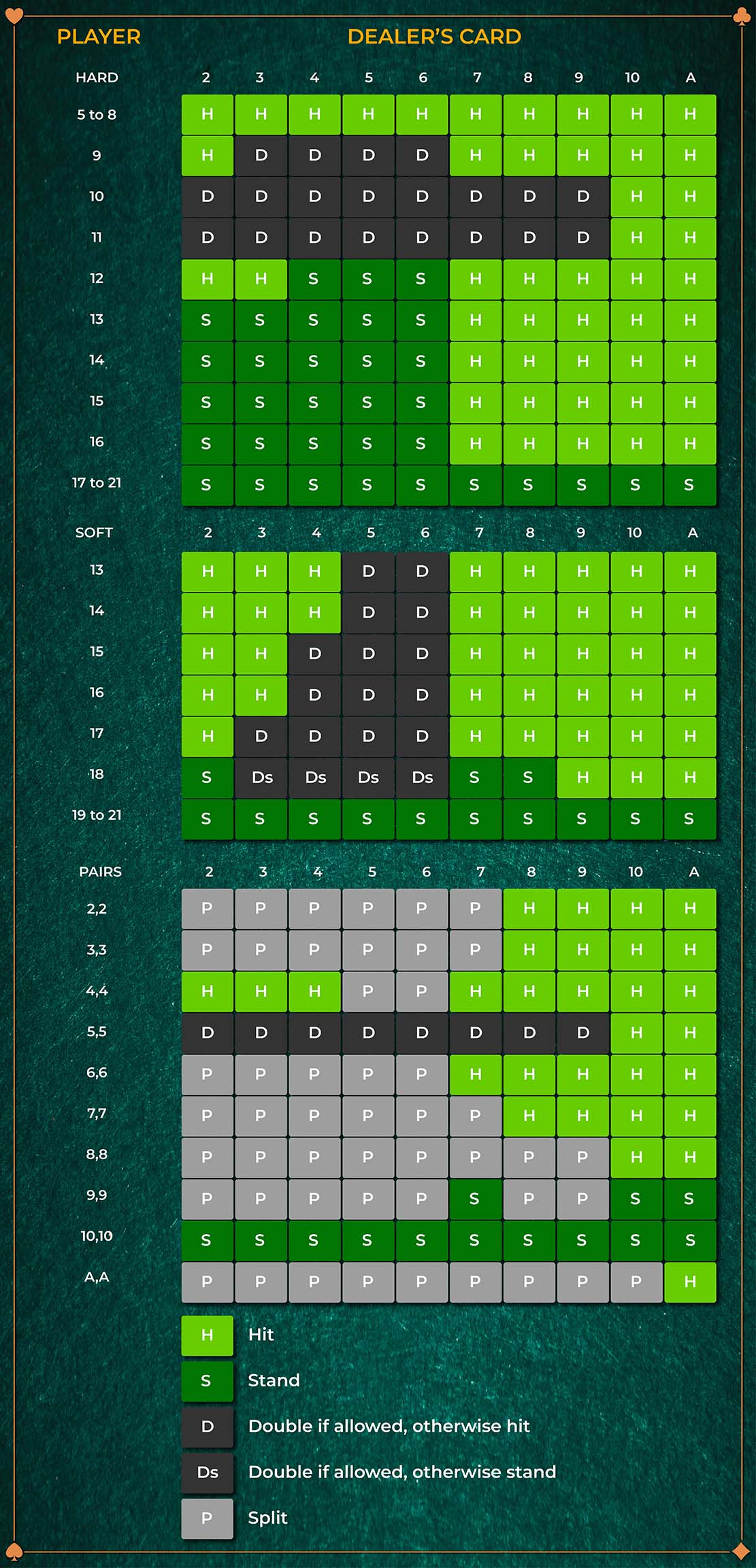

Memorise the strategy chart above in order to learn the best way to play each hand. It is as simple as that!
Basic Strategy is the name given to the best way to play each blackjack hand, whether it be hit, stand, split, double down or surrender.
It is the starting point of becoming a better blackjack player and therefore it is crucial that every play be committed to memory.
Whether you are playing online blackjack or blackjack at a land based casino, learning blackjack basic strategy and executing it correctly will enable you to playing at roughly at even with the casino. In order to beat the casino you will also need to learn card counting, however let’s take this one step at a time. Once you know basic strategy you can move on to learn card counting as card counting cannot be implemented without prior knowledge of basic strategy.
Let’s go over a few examples:
Doubling Hands – Especially on 9, 10 and 11
These are the three best starting totals you can have and hence in most situations you want to make the most of them by doubling your original wager because you will most likely end up with a total of 19, 20 or 21.
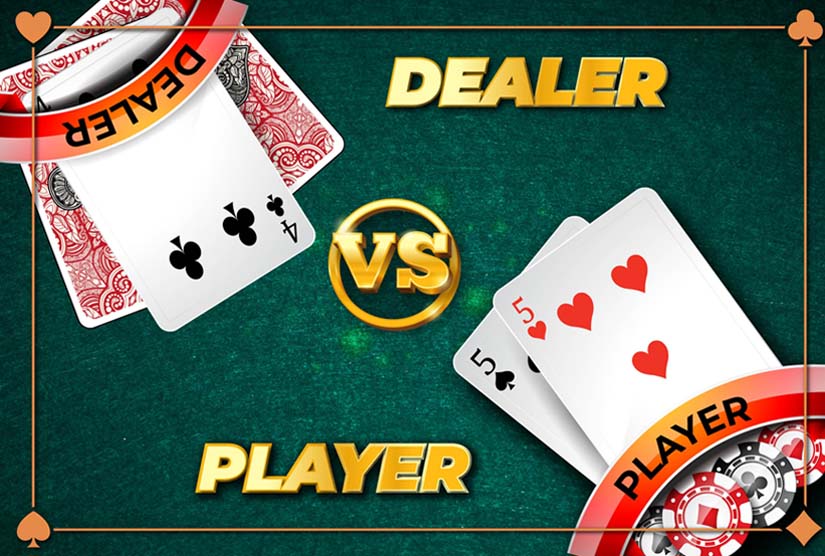



Player 12 Against Dealer 2 or 3 – HIT
This is a tricky one because some players like to hit and some like to stand.
Players like to stand in these situations because the dealer has to hit at least two more times and therefore is more likely to go onto bust.
However, basic strategy states to hit because statistically you will win more times than you will lose than if you were to stand.
With all other player hard hands above 12 it is advised to stand.
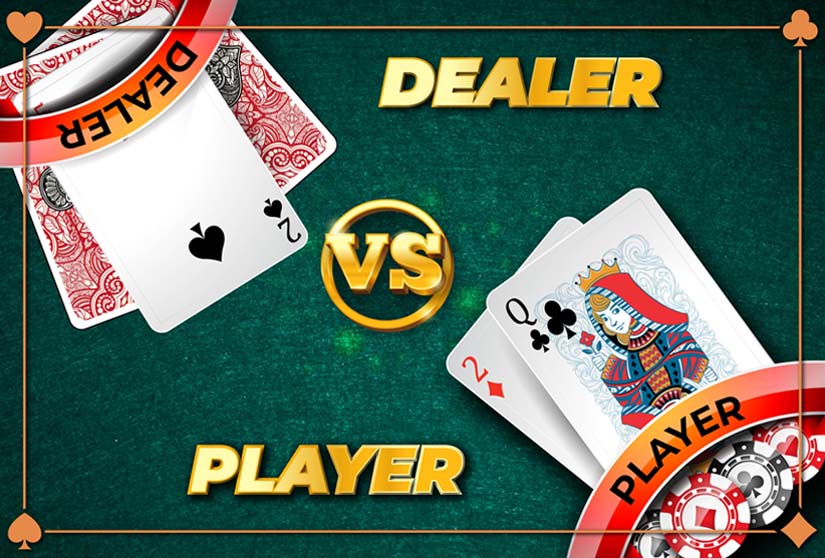

The Importance of Doubling on some Soft Hands
The advantage of a soft hand is that when you hit or take another card you cannot bust because the ace counts as a “1” or “11” dpending which is more favourable.


Splitting Pairs
Splitting pairs in some situations is advantageous. For example splitting 2’s against a dealer 5 is the correct statistcal play to make, because a 5 card is one of the worst cards for the dealer and therefore it’s important to take advantage of this situation.
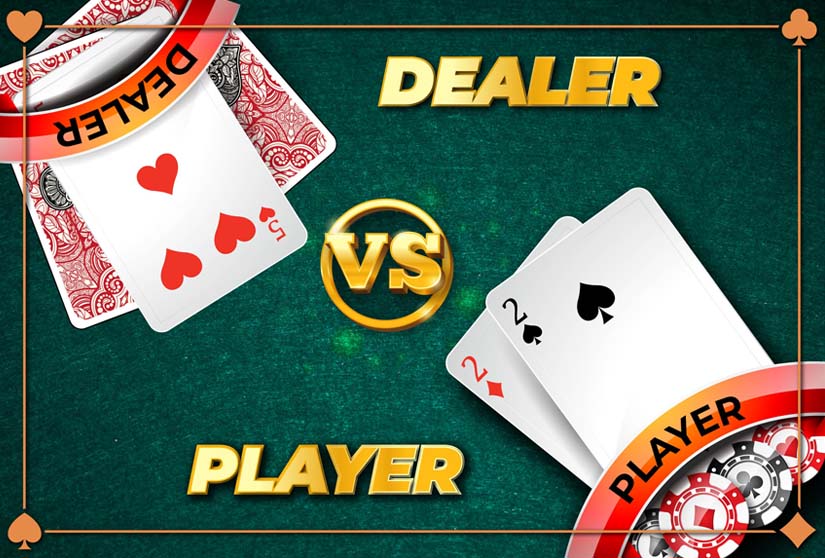

Another advantagious split situtaion is when the player has two 9’s and the dealer has an 8. The reason for this is because 9 is greather than 8 and because there are more 10 value cards in the decks than any other, you are more likely to have two totals of 19 against a possible dealer total of 18.
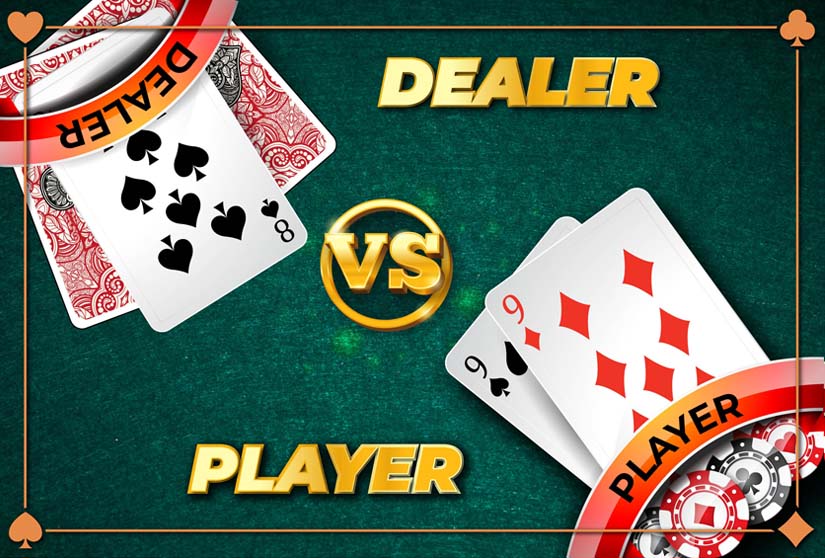

Another good situation to split your cards is when you are dealt aces. Aces should be split against every dealer card except for a dealer ace.
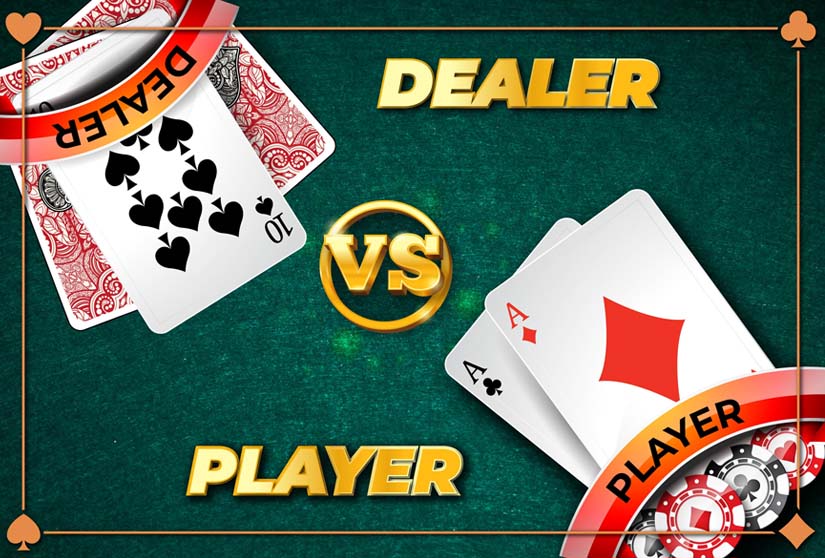

When to Stand?
It is advisable to stand when the dealer has a greater chance of busting. Remember the dealer has to stand on totals of 17 and above, so if the first card a dealer is dealt is 6 or below that means the dealer has to pull at least 2 more cards (except for an ace) and this means the dealer is more likely to bust as there are more high value cards in the shoe.
Player hands of 13,14,15,16,17,18,19,20 it is advised to stand against a dealer hand value of 6 and below.


Hitting on Soft 17
Hitting soft 17 against a dealer 8, 9, 10 or Ace is a must play because you have to assume the dealer will pull a 10 card to make either 18, 19, 20 or 21 which beats 17. A soft hand means you have a free chance of improving knowing that you cannot bust, therefore you should take that opportunity to try and improve.
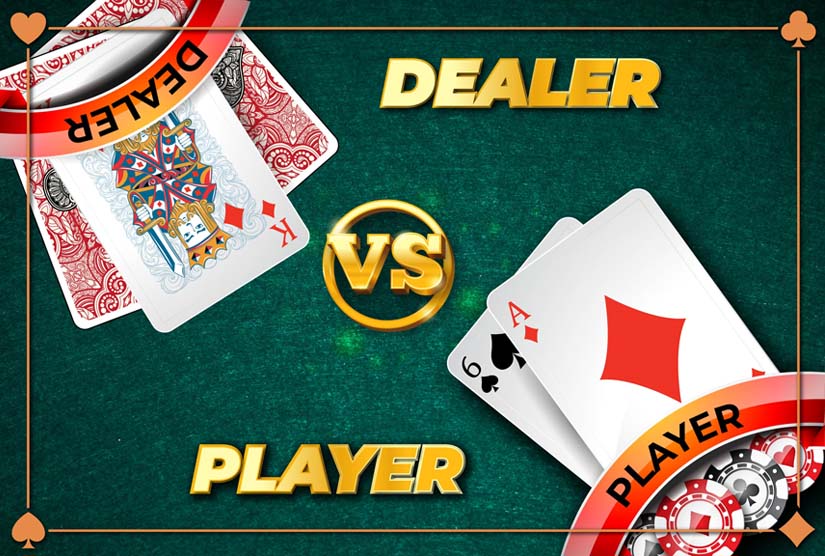

Hitting 16 against Dealer 9
It is important to hit 16 against a dealer card of 7 and above.
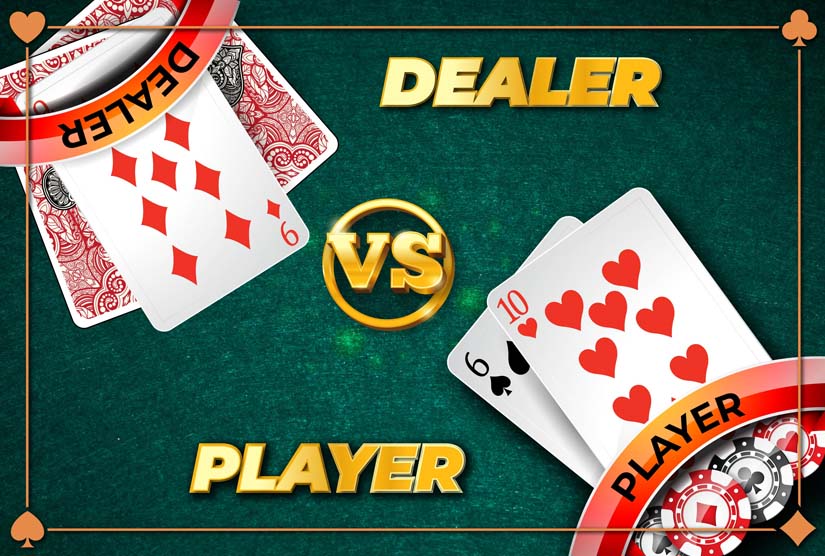

Best Canadian Blackjack Casinos
Blackjack Card Counting
Learning basic strategy puts you ahead of 99% of all blackjack players, however, if you truely want to beat the casinos and make money from playing live or online blackjack then using just basic strategy is not enough as this only puts you at even with the casinos. The final stage is to learn and implement card counting if you want to win in the long run.
Don’t be intimidated. You don’t need to be rain man or a mathematical genius to become an accomplished card counter. As with anything you want to excel at, it just takes practice.
What is Blackjack Card Counting?
In simplistic terms it is a way of keeping track of the proportion of high cards compared to low cards. When more high cards remain in the shoe the player has the advantage and this is when the player should increase the bet size.
Level One Point Count Strategy – Assigning a Point Value
This involves assigning a point value to each card
- 2,3,4,5,6 = +1
- 7,8,9 = 0
- 10,J,Q,K,A = -1
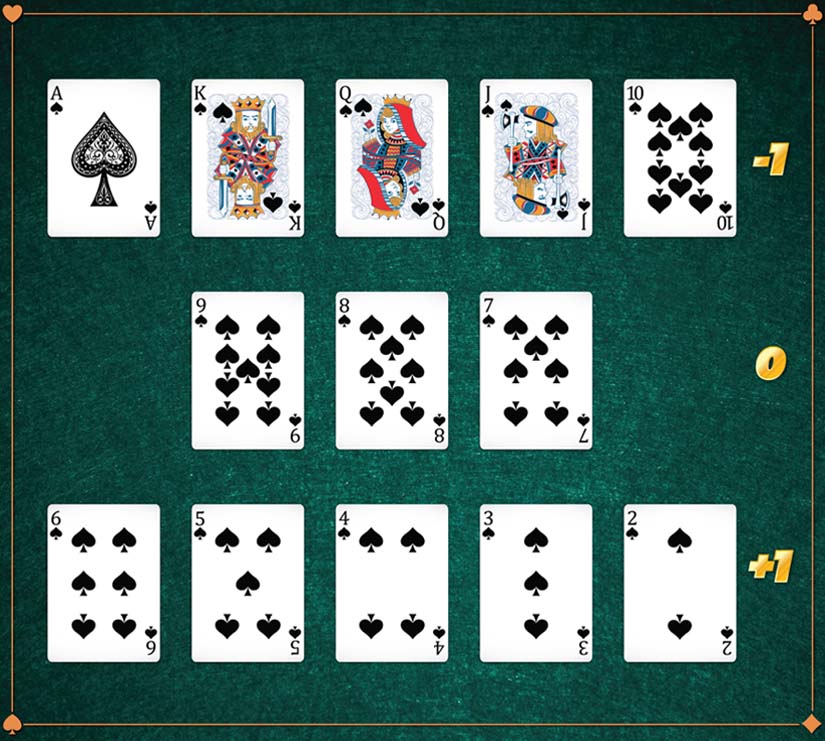

Calculating a Running Count
When the count is high, this means more low cards have been dealt (low cards = +1) and therefore the shoe is rich in 10s and aces, meaning the player has the advantage.
For Example, if the following cards have been dealt: Ace, 4, 3, 6, 2, King, 5, 8, 3, the count is +4. This is known as keeping a running count. The running count is +4.
In contrast, if the count is low and the shoe is rich in small cards then the casino has the advantage.
Once a running count has been calculated by adding the point values together, the next step is to calculate The True Count.
The True Count
The True count provides a more concise picture of the advantage/disadvantage of the remaining cards in the deck.
Theres a big difference between having a running count of +28 with 5 decks of cards remaining than with only 2 decks of cards remaining. The reason for this is because with only 2 decks of cards remaining there is a larger concentration of high cards.
The True Count is calculated by dividing The Running Count by the number of decks remaining.
For example a running count of +28 with 4 decks remaining equals 7, where as a running count of +28 with 2 decks remaining equals 14. Running counts convert to different true counts depending on the number of decks remaining.
Free Practice Online Blackjack
If you have managed to read our guides on basic strategy and counting you are well on your way to becoming an accomplished blackjack player. The best thing to do is play free online blackjack to practice these skills. Once you feel confident join one of our recommended casinos and play for real money.

